Simon Rogers | January 30, 2012 |
We are considering to organize a crowd-sourced map project, to release under a non-commercial license. What do you think it should be? Here’s one idea:
A crowd-sourced interactive atlas
We could start with a basic world or continent map, perhaps created in FT3, then distribute sections for detailing. Or perhaps, people could draw different maps from the perspective of different characters / races in the world. You could submit other maps (cities, inns, etc) for inclusion in the Atlas, and detail areas which interest you.
Alternatively, we could create symbols sets, drawing tools, or even an add-on from crowd-sourced materials.
Post your ideas in the comments, and let us know if you’d be willing to contribute, edit or organize.
21 Comments
Simon Rogers | January 27, 2012 |
Every year, we bundle up our annual subscription and offer it as a singleeasy install, and it’s available now.
I scoured the readme files and found that our latest collection include:
- 10 map-making styles with 486 drawing tools.
- 108 fill styles and textures
- 28 templates
- 45 maps
- 2238 symbols in 41 catalogs
- 55 pages of map-making guides
- 18 effect settings, new commands, a font Fractal Terrains 3 textures and a converter
The style pack Overland Perspectives gives you a beautiful vector drawing style set up to create perspective landscape maps.
The symbol pack Dungeons contains more than 1500 new high-detail bitmap symbols for your dungeon and outdoor floorplans.
The style pack Jonathan Roberts Overland contains a complete new overland style created by fantasy cartographer Jonathan Roberts.
The style pack 1930s Travel Guide contains a new floorplan drawing style for maps reminiscent of 1930s travel guides.
The style pack Modern Road and Street Maps contains a new drawing style for modern road atlas style maps.
The style pack Jon Roberts’ Dungeons contains a new drawing style for dungeon floorplans and battlemaps.
The map pack Mine Diorama contains a new complete, customizable diorama set.
The style pack Vertical Dungeon Geomorphs contains ready-to-use geomorph tiles and the style to create more of your own.
The style pack Miltary Operations contains a new style for modern and near-future operational maps.
The style pack Treasure Maps contains a new style for local-area player handouts and treasure maps .
The map pack Moe’s Dive contains two high-detail maps and a composite CD3/DD3 template.
The style pack 1930s Street Maps contains a new drawing style for pulp and horror games set in the 1930s.
The tool pack Climate Textures contains a set of seamlessly tiling bitmap textures for use in FT3 and CC3.
1 Comment
Simon Rogers | January 27, 2012 | Tome
by Remy Monsen
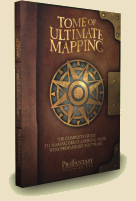 I am sitting here writing on the final parts of the new version of the Tome of Ultimate Mapping. That’s right, the release of the tome shouldn’t bee too far into the future.
I am sitting here writing on the final parts of the new version of the Tome of Ultimate Mapping. That’s right, the release of the tome shouldn’t bee too far into the future.
For the old-timers, and many of the newer users, you already know what the tome is all about. But for the rest of you, the tome is a rather large volume containing tutorials, tips & tricks and reference material for the complete collection of ProFantasy’s software.
This is an updated version of the previous tome. I’ve updated tutorials and information that is still useful in CC3, and added new CC3 content to take full advantage of all the new features in CC3 compared with CC2 Pro. The same goes for the new features from the various v3 add-ons available.
Right now, the book focus on all the current versions of the various programs, that is Campaign Cartographer 3, Dungeon Designer 3, City Designer 3, Cosmographer 3, Symbol Set 1 v3, Symbol Set 2 v3 and the compatibility updates for Dioramas Pro, Character Artist Pro, Perspectives Pro, Symbol Set 3 and the Source Maps series. The plan is to update the tutorials based on the compatibility updates to the proper v3 versions as the updates for those add-ons are released. Therefore, the tome will only be available as an electronic pdf file for now, with a print version released after all add-ons have been updated to proper v3 versions, since a printed book is a bit more difficult to provide a patch for compared to a pdf file!
The tome helps you make better maps with CC3, but also teach you how to be a better CC3 user. The tutorials stretch from making a basic overland map to how to customize the CC3 menu files and write your own macro commands. In-between this, we have a look at how to create the various types of symbols available in CC3, many tips for using the sheet effects, and much more. The Tome goes through each of the add-ons in turn, taking care to make the book useful even if you don’t have all the add-ons, but at the same time helping to tie the add-ons a little bit closer together.
The tome itself is designed to be a resource for most CC3 users, regardless of proficiency level, although if you are just starting out with CC3, I would recommend working through the manual first to get a grip on the basics of CC3.
Writing the new version of the tome has been a fun and interesting process. I remember when I first read the original tome myself, written by Master Mapper Allyn Bowker. It was filled from cover to cover with all kinds of interesting stuff about CC2 Pro. I was a novice user back then, and I was really impressed by all the fantastic maps I could make using the information in the Tome. It discussed techniques I never would have thought of on my own, and it opened my eyes for many of the capabilities of the various add-ons for CC2 Pro. Fast forward a few years, CC3 comes along, and the style of maps one could make changed radically. I still found the old Tome to be highly useful, but I was also hoping ProFantasy would create an updated version soon. I was rather proficient in the usage of CC3, but I was really looking forward to learning even more of the software.
Then one day, an email arrives from Simon, asking me if I would update the CC3 Manual to match the latest version, and bring the Tome into the CC3 era. I was a bit surprised actually and a bit unsure what to do. Here I am, eagerly waiting for the book to be made so that I can read it and learn from it, and suddenly I am actually being asked to write the thing? Well, I did some thinking, and after a short while I concluded that I did have the have the necessary skills to do it. I know CC3 and its add-ons quite well, and I have experience writing technical documentation (I am a teacher by trade, employed as an assistant professor at one of the larger university colleges in Norway, so I do write articles and sometimes even books for use by my students). So, I told Simon yes, and got to work. I started by updating the CC3 manual, which have been available for some time now, and then moved on to the tome. To be honest, it was a lot more work than I could ever have imagined when I started, but it was a very interesting process, and I learned quite a bit more about the programs in the process. I think the end result ended up pretty good, and I hope you all agree when the book is published, and that the book will do as the title of this post says, helping you make better worlds with ProFantasy’s software.

10 Comments
Simon Rogers | January 10, 2012 | business
This post discusses business information which will probably not be of interest to most readers. Another article will cover our product development plans for 2012.
The Economy
 It was a tough time for the world economy, including the Eurozone, the UK and the USA, our primary market. My view is that while the economy has a negative effect on sales for many businesses, the effect of the economy on individual businesses is less pronounced than other factors, some of which are under the control of the business owners. Other businesses (Domino’s Pizza for example) positively benefit from downturns. Psychology suggests that we are much more likely to attribute positive results with our own endeavours, and negative results with external factors. So, anything I say here is pretty much speculation. Take the salt provided.
It was a tough time for the world economy, including the Eurozone, the UK and the USA, our primary market. My view is that while the economy has a negative effect on sales for many businesses, the effect of the economy on individual businesses is less pronounced than other factors, some of which are under the control of the business owners. Other businesses (Domino’s Pizza for example) positively benefit from downturns. Psychology suggests that we are much more likely to attribute positive results with our own endeavours, and negative results with external factors. So, anything I say here is pretty much speculation. Take the salt provided.
Our Sales
So this year, our UK sales in pounds were within a gnat’s whisker of 2010 and 2009, when adjusted for inflation. This is pretty good. I’d like to say it’s all down to our business choices, despite the downturn, but I think there is an element of the Domino’s Pizza about the roleplaying hobby – it’s one of the best-value pastimes there is. People get hours and hours of use of our of software and their games, and it’s a lot cheaper than going out. I’ve said facetiously that the RPG industry slogan should be “There’s never been a better time to enter a world of fantasy.”
Only a neglible fraction of our sales are through distribution, and this hasn’t changed. However, retail sales are disproportionately CC3, so it’s still worthwhile continuing this. Another interesting phenomenon is that while annual sales of CC3 (our entry product) increased by 6%, the average sale declined slightly as if to compensate.
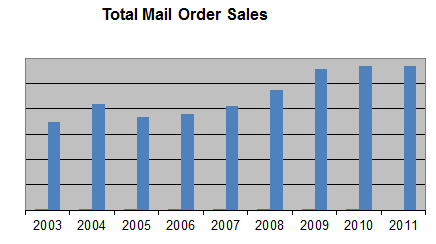
We did release a new product – FT3 – but the upgrade was modestly priced, reducing our potential revenue, and because it’s such a widely accepted product among CC3 users, it was mainly upgrades. 2012 will be different – we’ve got three products in the pipeline.
Ralf says that convention sales are down a bit, but that overall the quality of maps has increased. Ralf and I think that the size of the table top roleplaying game market is stable, or even shrinking, but that the existing participants are older, wealthier and more committed than before. I am hoping that market leader Wizards of the Coasts new version of Dungeons and Dragons will expand the market, as that helps everyone.
The Website
Site visits increased about 30% since 2009, as has the average time on the site, the number of pages per visit. We achieved more than 450,000 unique visitors in 2011. We did a lot of work earlier in the year using Google Analytics to increase our conversion rate; it definitely increased as result, but nonetheless the conversion rate was lower than in 2010. I suspect that has more to do with the nature of the visitors, though I speculate that people are taking longer to decide and are spending their money more carefully. We updated our copy rather carefully, too, and have plans to revamp the website based on our recent poll.
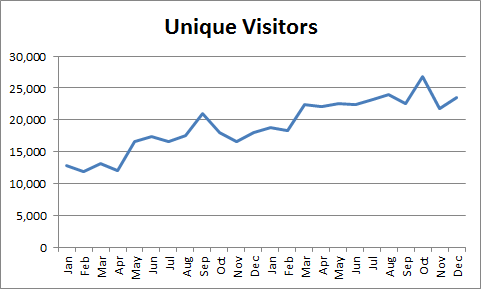
Other RPG Cartography Companies
It remains true that we are the only company producing cartography software for the RPG industry full time.
In our tiny industry, we think of other rpg map-makers as colleagues rather than rivals, so we were sad to see that, according to forum posts, Dundjinni has not been on sale for while. There has been no update since March last year. We’ve tried to reach the owner, Mindy, to no avail. It’s sad particularly because of the excellent community which built up around the software, creating new art which the CC3 community could also use. (This situation may change – I hope it does – so check their website to make sure.)
NBOS continues to produce Fractal Mapper, and Ed Diana released a new version of Astrosynthesis which he made compatible with the latest Fractal Terrains 3.
Miscellany
- There is a definite seasonal sales trend over the years. The spikes for product releases just about even out, though the Annual subscription helps our December sales disproportionately. I’d be very interested to hear if this pattern is repeated in other related companies.
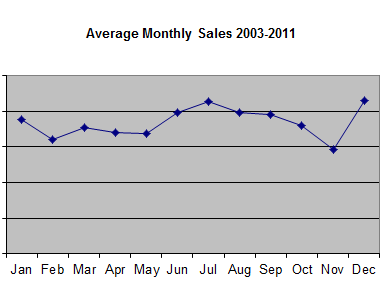
- The relative sales between the UK, USA and the rest of the world have remained unchanged now for at least three years.
- The proportion of download sales has increased from about 25% to 30% from 2010 to 2011
- We’ve sold to 92 countries in the past two years including Cameroon, Albania, and Reunion.
11 Comments
Simon Rogers | December 9, 2011 |
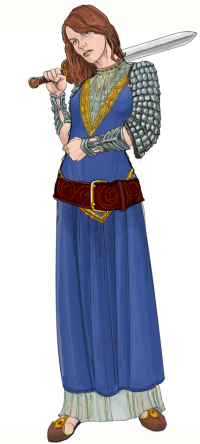 Usually we only manage one product a year other than our Cartographer’s Annual, but 2012 is shaping up to be quite prolific. Nearly all the Symbol Set 3 art is in, Perspectives 3 and now Character Artist 3.
Usually we only manage one product a year other than our Cartographer’s Annual, but 2012 is shaping up to be quite prolific. Nearly all the Symbol Set 3 art is in, Perspectives 3 and now Character Artist 3.
Character Artist 3
Character Artist Pro’s utilitarian art work is looking long in the tooth, so we want to supplement it with a complete new set for Character Artist 3.
After a long search, we’ve commisioned artist Rich Longmore to create symbols for Character Artist 3. When creating characters, you’ll be able to hide or show layers to vary the detail, so a figure can be used as a detailed character portrait or a on a standee. There will be three versions of each gender, giving a range of body type and we’ll include a greater range of facial features, too.
Perspectives 3
The development work for Perspectives 3 is complete, as is the artwork, so it’s a matter of adding textures, putting it all together and testing it. Again, we are taking advantage of CC3’s effects and raster artwork to give an attractive alternative to the vector art we already provide. The new version shades walls and other surfaces so that they look properly lit.
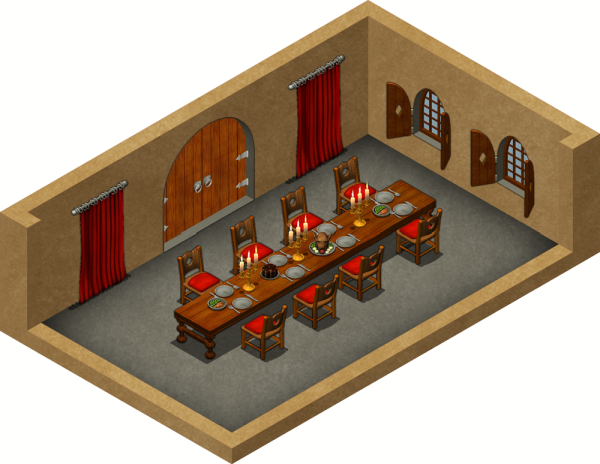
Symbol Set 3
Jon Roberts is half way through the symbols for his set – all the others are done.
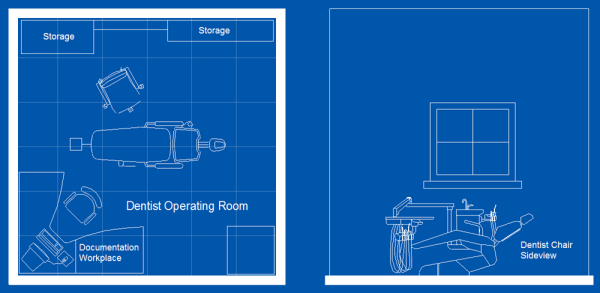
13 Comments
Simon Rogers | November 22, 2011 | map of the month
[NLP138 from the ProFantasy forum produced this excellent floorplan using Cosmographer. This is how he did it:]
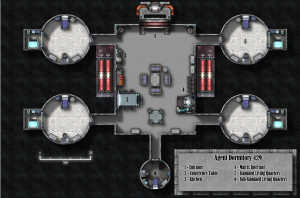 Well, I knew I wanted to do a floorplan and so my first thought was to fire up DD3 but I’m really lazy so loading the other textures and symbols sounded like a drag and I knew I wanted to use symbols and textures from Cosmo3. So instead of using Dungeon Designer I started off with a Cosmographer bitmap deckplan. I’d already spoken with my friend who was running the game to get the specifics on the size of the pods and the central hub so picking my dimensions was more or less already done for me.
Well, I knew I wanted to do a floorplan and so my first thought was to fire up DD3 but I’m really lazy so loading the other textures and symbols sounded like a drag and I knew I wanted to use symbols and textures from Cosmo3. So instead of using Dungeon Designer I started off with a Cosmographer bitmap deckplan. I’d already spoken with my friend who was running the game to get the specifics on the size of the pods and the central hub so picking my dimensions was more or less already done for me.
The first thing I did was I drew out the pod you see in the upper-right. The walls surrounding it are actually two arcs because I was having a hard time trimming the wall to insert the door symbol – at first I drew the walls as a circle (there may be an easier way to do this but I’m still not that savvy). Once the pod was completely built (to include furniture) I copied it once and moved it down. Then I did a mirror copy of the pod to give me the same layout on the other side – originally I was just going to make 3 copies and then rotate them but I didn’t like the way that would end up looking furniture-wise so I was happy to see there was a mirror function (this was a bit of a learning experience for me). The last smaller pod was made in the same fashion but made deliberately more cramped in with a dingier looking floor texture to reflect the lower social and economical status of the inhabitant.
The central node was then drawn – I wanted to use a different deck texture from the pods since according to the gamemaster the pods were modular and could be swapped out and exchanged. I figured the central hub then would be very neutral then regardless of the other occupants wealth level. Adding the symbols was a lot of fun – but slightly tedious at times trying to get them just right and I’m sure I could zoom in to some of the sections and find tiny mistakes.
Once all of the embellishments were in place it was just a matter of tweaking the sheet effects. I used the default ones and then altered them slightly – I think I added a wall shadow to the “bulkheads” sheet and I know I played with the different symbols effects trying to keep them from throwing too many weird shadows. I also created two sheets for the legend plate in the bottom right but I think it looks pretty standard. Just a couple of rectangles with shadow/blur effects and some words on that.
On my website I’ve got the finished image (not as high rez) and a few of the “in production” images that I sent to my play group to show them the process.

Comments Off on Agent’s Dorms Map of the Month
Simon Rogers | October 28, 2011 | poll, Source Maps
[iframe_loader width=100% height=650 frameborder = 0 marginheight=0 marginwidth=0 scrolling=no src=http://www.profantasy.com/poll/sourcemaps.asp ]
Comments Off on Source Maps Poll
Simon Rogers | October 28, 2011 | Master Mapper
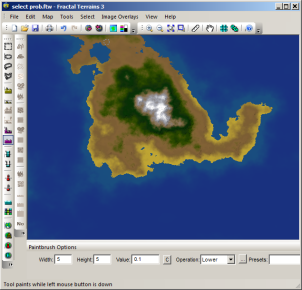 News
News
- If you are a Fractal Terrains 3 user, an update is already available. Log in to get it.
- The Fractal Terrains 3 upgrade price of $9.95 / £7.50 will be increased on 1st November – log in and get it while you can!
- We’ve announced a new recipient of the Master Mapper award.
- We’ve launched Fractal Terrains 3
- Here is an update on Symbol Set 3 Modern Symbols for version CC3
Articles
Comments Off on October News
Simon Rogers | October 28, 2011 | development, Symbol Set 3
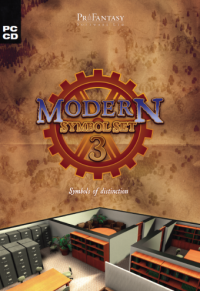 Symbol Set 3: Modern includes 50 templates and 1100 symbols for overland floorplans. For the CC3 version, we wanted to make sure an upgrade is worthwhile, so we are adding three new floorplan styles and another overland style.
Symbol Set 3: Modern includes 50 templates and 1100 symbols for overland floorplans. For the CC3 version, we wanted to make sure an upgrade is worthwhile, so we are adding three new floorplan styles and another overland style.
CC3 allows us to use raster (paint style art), so two of those new styles will be raster-based; the third will be traditional modern-looking vector CAD symbols, to create blueprint style artwork.
Jonathan Roberts is putting the finishing touches on his style which is detailed and grimy but not photorealistic. Michael Tumey’s is clean, bright and more suburban.

4 Comments
Simon Rogers | October 28, 2011 | Award, Master Mapper
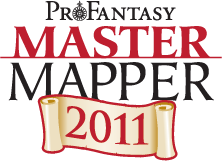 In 1998 we instituted the coveted Master Mapper award for excellence in cartography. You can see the hall of fame here. One Master Mapper is a full time freelancer and ProFantasy mainstay – Ralf Schemmann; L Lee Saunders creates amazing add-ons, and other Master Mappers still contribute to the community.
In 1998 we instituted the coveted Master Mapper award for excellence in cartography. You can see the hall of fame here. One Master Mapper is a full time freelancer and ProFantasy mainstay – Ralf Schemmann; L Lee Saunders creates amazing add-ons, and other Master Mappers still contribute to the community.
We are reinstating the Master Mapper award. There is a backlog of worthy candidates, so expect to see us making up for lost time with a few select awards. This brings me to our Master Mapper, best known to the ProFantasy community as Joachim de Ravenbel, a name Jean-Michel Bravo took on a whim for RPG-related posts.
Jean-Michel is unusual even amongst Master Mappers for the breadth of his talent. He creates maps, writes macros, develops map-making techniques, supports the forum community, and has even programmed an XP – the CC3 name for add-ons.
Continue reading »
7 Comments
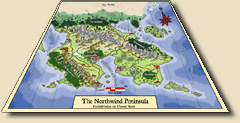
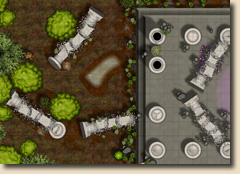
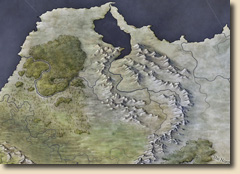
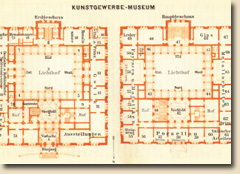
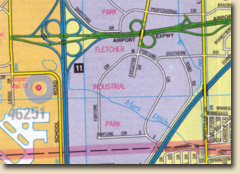
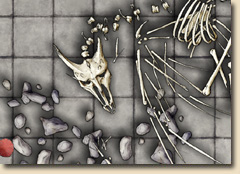
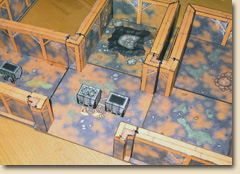
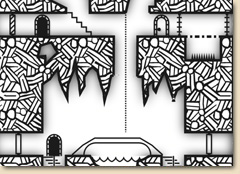
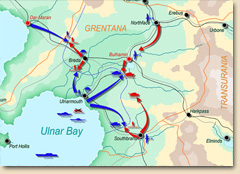
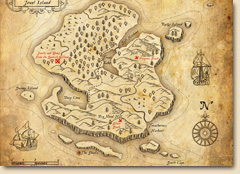
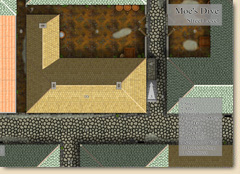
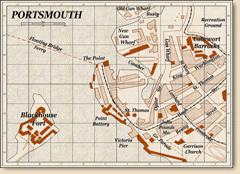
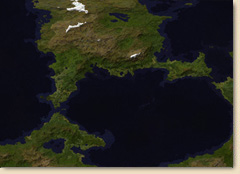
 I am sitting here writing on the final parts of the new version of the Tome of Ultimate Mapping. That’s right, the release of the tome shouldn’t bee too far into the future.
I am sitting here writing on the final parts of the new version of the Tome of Ultimate Mapping. That’s right, the release of the tome shouldn’t bee too far into the future.
 It was a tough time for the world economy, including the Eurozone, the UK and the USA, our primary market. My view is that while the economy has a negative effect on sales for many businesses, the effect of the economy on individual businesses is less pronounced than other factors, some of which are under the control of the business owners. Other businesses (Domino’s Pizza for example) positively benefit from downturns. Psychology suggests that we are much more likely to attribute positive results with our own endeavours, and negative results with external factors. So, anything I say here is pretty much speculation. Take the salt provided.
It was a tough time for the world economy, including the Eurozone, the UK and the USA, our primary market. My view is that while the economy has a negative effect on sales for many businesses, the effect of the economy on individual businesses is less pronounced than other factors, some of which are under the control of the business owners. Other businesses (Domino’s Pizza for example) positively benefit from downturns. Psychology suggests that we are much more likely to attribute positive results with our own endeavours, and negative results with external factors. So, anything I say here is pretty much speculation. Take the salt provided.










